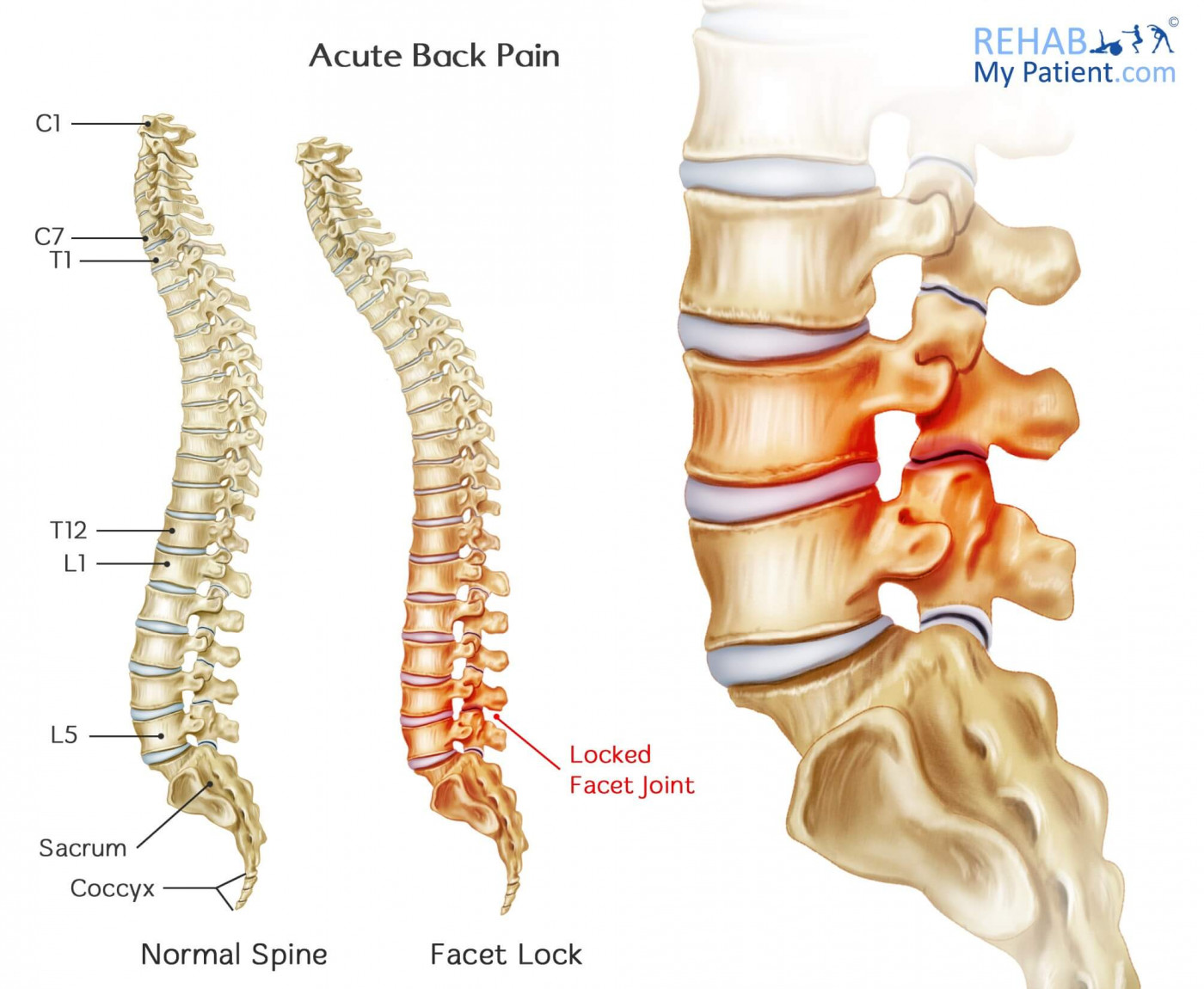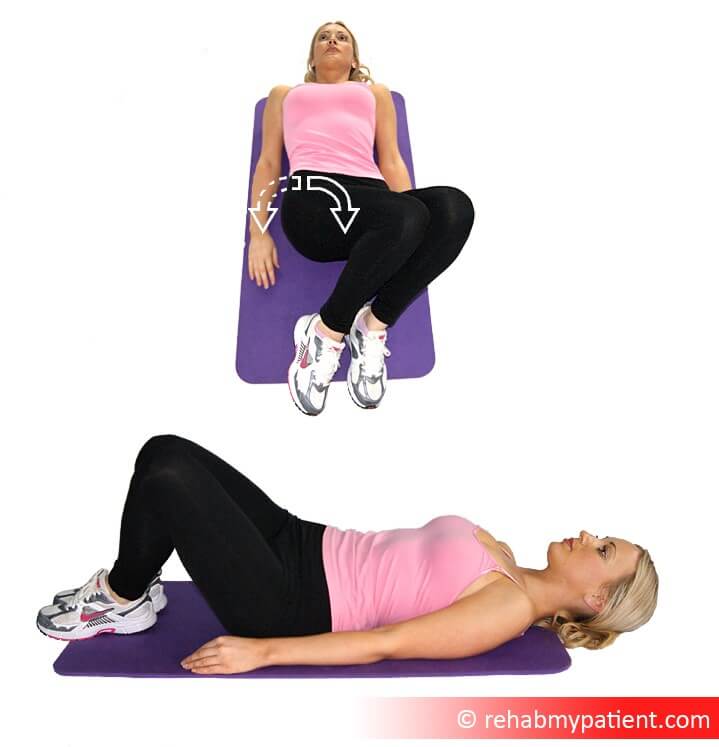
A facet lock is one of the most common causes of acute back pain. Severe acute episodes of facet pain might be attributed to sudden movement, which can traumatize the facet joint. Most of the time, facet pain tends to be acute lasting a few days to 4 weeks, but can become more chronic in nature. The underlying cause of the condition is related to long-term changes within the facet joint and disc narrowing which can mean the problem can re-occur.
So what exactly happens? Well there are a few processes going on that need to be discussed.
Firstly acute back pain/facet locking can occur when either bending forwards, or bending backwards, or coming up from a forward bend. For example, imagine you are picking up a pen from the floor, you bend forwards, and then something “goes” in your back. Your back is straight away locked, and you are feeling very sharp pain. This is an acute facet joint lock. The pain is typically so severe you cannot sit comfortably, or stand for long periods, and typically the only comfortable place is the bed.
But why does it occur? Again this is complicated, but there are a number of associated problems. Firstly hypermobility. If the back is very mobile, it is possible to strain a facet joint at its end of range. Secondly, if the back is very stiff, it’s possible to lock the facet joint due to a lack of mobility. Also, sometimes there is an underlying disc degeneration occurring. The disc opens the spaces between the facet joints, so if the disc has worn, the facet joints now sit closer together making them more susceptible to injury/locking/strain.
But why is it so painful? Numerous theories have been proposed, including a nipping of the joint capsule between both of the bones. As with any trauma to the joints, an inflammatory reaction accompanied with pain and swelling of the joints, which can last for multiple days. This inflammatory reaction causes gross muscle spasm and pain.
In terms of chronic pain, the cause is often attributed to a long-term change in the joint, which means the pain doesn’t go away for quite some time. In the majority of cases, degeneration can cause arthritis problems. Arthritis of the facet joint is known as spondylarthrosis. This can be a long-term consequence of minor trauma to the facet joint over many years, poor posture, excessive sport or pressure on the back.
Lower Back Anatomy
Facet joints are nestled in the back on either side of your spinal column between the vertebral bodies and the discs. Each vertebra has a bony prominence on either side forming a facet joint between the vertebra above and below. Facet joints are surrounded within a joint capsule and it has been shown that within the lower back a meniscoid structure can lie, similar to that of a mini version of the knee joints’ meniscus. The main role of the facet joint is to minimize excessive movement and provide the spine with stability.
In-between the vertebrae sit discs – these help the vertebrae to absorb force and to allow movement. Surrounding the vertebrae are muscles, ligaments and nerves. All of which can become injured and thus increasing the severity of the acute back pain.

How to Treat a Facet Lock
- Anti-Inflammatory Medication
In severe cases, a non-steroidal anti-inflammatory can help for a short period of time. Inflammation and pain will be reduced, which will allow you to move freely and not have to worry about being in a tremendous amount of pain. Get advice from your doctor on when/how to take this.
- Physical Therapy, Osteopathy, Chiropractic
See your therapist as soon as possible. Typically the problem can be treated very quickly. Expect to need treatment every 2-3 days and depending on the severity of the joint lock, back pain can be significantly improved in just a few days compared to rest at home. If the problem has lasted longer than a week and you have limited movement, a therapist might be able to manipulate the joints using a controlled thrust. This will work to open up the joint and break down any scar tissue in the early stages, which can limit your range of movement. Thrusts are not always required, and gentler mobilizations can be very effective. Heat treatment and massage usually precede the treatment to help relax any spasms. Ultrasound or other forms of electrotherapy such as TENS or interferential can also help reduce inflammation.
- Exercises
Your Rehab My Patient therapist will discuss exercises that you can do to improve mobility to your spine, which will reduce inflammation and muscle spasm.


Tips:
- To help prevent the condition from occurring in the first place, work to maintain proper posture throughout the day.
- Prolonged bending or sitting where the spine is flexed should be kept to a minimum as they can increase the amount of pressure on your discs, which leads to shrinking and degeneration. Remember that people with a sedentary lifestyle are prone to facet joint problems.
- When your discs shrink, they will contact one another and begin bearing weight, which isn’t what they are meant to do.
- Do everything you can to take care of your back posture at all times.
- Practice exercises to help strengthen the spine and stabilize the surrounding muscles.
- Use of a seat support can help improve your posture when in a sitting position.
Sign Up
Sign up for your free trial now!
Get started with Rehab My Patient today and revolutionize your exercise prescription process for effective rehabilitation.
Start Your 14-Day Free Trial